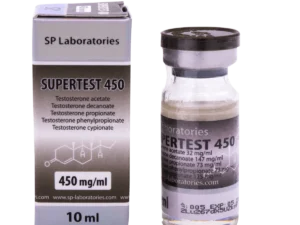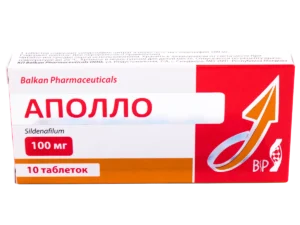A successful power training program should be part of the entire long-term annual training plan, and not just its individual steps. At the same time, strength training should be treated with due attention. Only in the case of the correct application, strength training helps protect the athlete from getting injured, postpone the onset of fatigue and allow the athlete to increase the level of energy production to achieve optimal performance. It has also been proven that regular strength training reduces the risk of death from all causes by almost a one quarter, and cancer mortality by 31%. At the same time, to ensure the effectiveness of strength training, it is necessary to comply with the goals defined for a particular training phase, in combination with the general plan.
Since the power training program is a methodological and scientific strategy aimed at improving the performance of an athlete, it should be developed very carefully. An effective training program should include the principles of periodization of strength throughout the year. Regardless of its duration, the power training program also reflects the methodological knowledge of the trainer and takes into account the physical potential and the accumulated base of the athlete.
The key to a quality power training plan is its simplicity, objectivity and flexibility to match the physiological adaptation of the athlete and improve performance.
Power training Session Plan
Training session is one of the main tools for organizing an athlete’s daily work program. To ensure optimal organization, the power training session can be divided into four main stages. During the first two (introductory part and warm-up), the athlete is prepared for the main part of the training, and the goal of the final stage of the training is to return the athlete to a normal physiological state.
Introduction
During the introductory part of the training session, the trainer brings to his wards the training goals for a specific day and methods for achieving these goals. In addition, the trainer divides athletes into groups and gives appropriate advice on conducting a daily training program.
Warm up
The goal of the warm-up is to prepare athletes for the subsequent implementation of the training program. During the warm-up, the body temperature is rising, which helps to increase the athlete’s performance. Warming up has a stimulating effect on the functioning of the central nervous system, which coordinates all the systems of the human body, accelerates the motor reaction by increasing the transmission rate of nerve impulses, improves the biomechanical activity of the motor system, increases the rate of muscle contraction and the maximum power generated by the muscles, and also improves the coordination of the athlete. An increase in body temperature also warms muscles and ligaments and helps to stretch them, preventing or reducing the likelihood of tearing of the ligaments, tendons and muscles. Heated muscle tissue is able to withstand stretching at a higher speed without injuring the ligaments.
The warm-up before strength training consists of two parts: general and specific.
A general warm-up (lasting from 5 to 10 minutes) includes light jogging, cycling or steppe exercises, followed by general developmental exercises and dynamic stretching exercises to enhance blood flow, resulting in a rise in body temperature. As a result of this activity, muscles and ligaments are prepared for the implementation of the planned program. In addition, during the warm-up, athletes need to psychologically prepare for the main part of the training session by visualizing exercises and self-motivation in order to withstand the stress of training.
A specific warm-up (lasting from 3 to 5 minutes) is a transitional stage to the working part of the training. At this stage, athletes are preparing for effective work by performing several approaches with a small number of repetitions (from 5 to 1-2 as the load increases), using appropriate equipment and gradually increasing the load to the level planned for this training session (to perform approaches with a large number of repetitions, the warm-up should include a small number of approaches, and to perform a small number of approaches under a higher load, the warm-up should include a larger number of approaches).
Main part of training
The main part of the training session is devoted to the implementation of the agreed program, which outlines the goals of the training, including strength training. In most sports, the main goal of training is to perform technical and tactical work, and the development of strength is a secondary goal. Priority work is done immediately after the warm-up, followed by strength training. Often, a specific activity preceding strength training acts as a general warm-up so that the athlete can begin to directly perform the warm-up approaches of the first exercise. The types of exercises performed on a particular day depend on the stage and goals of the training. Table 1 shows approximate options for determining the sequence of the training process for several training sessions.
Table 1.
Example options for determining the training process sequence
| Training session 1 | Training session 2 | Training session 3 | Training session 4 |
| Warm up | Warm up | Warm up | Warm up |
| Alactic technical skills | Lactate technical and tactical skills | Aerobic Tactical Skills | Alactic technical skills |
| Speed | Strength endurance | Muscle stamina | Power |
| Maximum power |
The training program should be based on scientific methods, and the fundamental principles for the selected sport are determined by the dominant energy system of the body. When discussing certain combinations for a training session and for a micro-cycle, coaches and athletes should consider the following key points:
Power – is the main power quality in sports characterized by the presence of short-term explosive actions (up to 10 seconds). Examples include short-distance running, jumping and throwing disciplines in athletics, jerking in cycling, ski jumping, freestyle skiing, diving, serving and batting a ball in baseball, throwing a ball in American football, any jump or rapid change of direction in a team sport, rapid movement of limbs in boxing, wrestling and martial arts.
Strength endurance (or short-term muscle endurance) – is the basis of work on high-speed endurance (duration from 15 to 50 seconds), characterized by quick actions interspersed with rapid changes in direction, jumping and short breaks for rest. We can talk about swimming at distances from 50 to 100 meters, athletics with running at distances of 200 to 400 meters, speed skating at distances of 500 meters, tennis, figure skating and a lot of game elements in team sports.
Continuous activity performed against any resistance (gravity, earth, snow, water or ice) mainly depends on muscle stamina. We are talking about rowing, swimming at a distance of over 100 meters, kayaking and canoeing, skiing and certain elements of team and sports where rackets are used, as well as martial arts. Thus, strength trainers should carefully analyze the sport and determine the proportions of the development of power, strength endurance or muscle endurance of the athlete.
Cool-down
While the warm-up acts as a transition from the normal biological state of daily activities to high-intensity training, the cool-down is a transition that has the opposite effect. After a cool-down, the body returns to normal.
Therefore, after the last exercise, athletes should not immediately go to the shower. Instead, during a 10–20-minute cool-down, athletes can perform activities that contribute to faster recovery after a training load.
As a result of training, especially when performing intensive work, a large amount of lactic acid accumulates in the body of athletes, and muscles become tired, become tense and stiff. To overcome fatigue and the recovery process, athletes need to perform relaxation exercises and stretching.
In particular, at the end of the training session, athletes should devote 5-10 minutes of time to continuous aerobic activity of low intensity, as a result of which perspiration continues, followed by stretching for 5-10 minutes. Due to this, the overall recovery is improved and metabolic products are removed during the transition from muscle cells to the circulatory system, resulting in a decrease in body temperature, heart rate and blood pressure.
In addition, when holding a cool-down, the level of cortisol is reduced. If this does not happen, then a night’s sleep can be restless. Cortisol levels can remain high for up to 24 hours after a workout, resulting in a slower recovery and adaptation process. In addition, after a cool-down, the level of catecholamines, in particular, adrenaline and norepinephrine, decreases.
When performing a cool-down activity, the athlete’s emotional stress also decreases, this contributes for psychological recovering. Finally, stretching allows the muscles to return to their anatomical length and restore the motor volume of the joint. If the stretching is not performed, then the specified process may drag on for 24 hours.
As soon as the effect of fatigue begins to decrease when doing a cool-down, the athlete should speed up the process of recovery and adaptation of the body by replenishing energy sources. This topic is discussed in more detail in the article Nutrition of Athletes. In this article, the authors once again emphasize the fact that the speed of recovery and adaptation is determined not only by the type of training performed, but also by the level of preparation of the athlete, internal load (i.e., residual fatigue) at the end of the power training session, as well as his diet.







